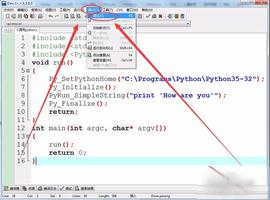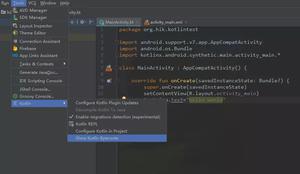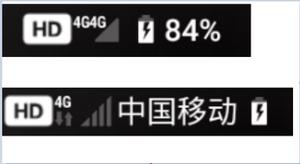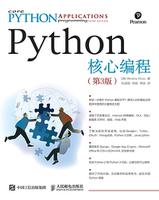如何使用 Python 使用编码器和解码器生成自动编码器?
Tensorflow 是 Google 提供的机器学习框架。它是一个与 Python 结合使用以实现算法、深度学习应用程序等的开源框架。它用于研究和生产目的。
可以使用以下代码行在 Windows 上安装“tensorflow”包 -
pip install tensorflow
Tensor 是 TensorFlow 中使用的一种数据结构。它有助于连接流程图中的边。该流程图被称为“数据流图”。张量只不过是一个多维数组或列表。
Keras 是作为 ONEIROS(开放式神经电子智能机器人操作系统)项目研究的一部分而开发的。Keras 是一个深度学习 API,它是用 Python 编写的。它是一种高级 API,具有有助于解决机器学习问题的高效界面。它运行在 Tensorflow 框架之上。它旨在帮助快速进行实验。它提供了在开发和封装机器学习解决方案中必不可少的基本抽象和构建块。
Keras 已经存在于 Tensorflow 包中。可以使用以下代码行访问它。
import tensorflowfrom tensorflow import keras
与使用顺序 API 创建的模型相比,Keras 函数式 API 有助于创建更灵活的模型。函数式 API 可以处理具有非线性拓扑结构的模型,可以共享层并处理多个输入和输出。深度学习模型通常是包含多个层的有向无环图 (DAG)。函数式 API 有助于构建层图。
我们正在使用 Google Colaboratory 运行以下代码。Google Colab 或 Colaboratory 帮助在浏览器上运行 Python 代码,并且需要零配置和免费访问 GPU(图形处理单元)。Colaboratory 建立在 Jupyter Notebook 之上。以下是代码片段,了解如何使用编码器和解码器生成自动编码器 -
示例
encoder_input = keras.Input(shape=(28, 28, 1), name="img")print("Adding layers to the model")
x = layers.Conv2D(16, 3, activation="relu")(encoder_input)
x = layers.Conv2D(32, 3, activation="relu")(x)
x = layers.MaxPooling2D(3)(x)
x = layers.Conv2D(32, 3, activation="relu")(x)
x = layers.Conv2D(16, 3, activation="relu")(x)
print("Performing global max pooling")
encoder_output = layers.GlobalMaxPooling2D()(x)
print("Creating a model using the layers")
encoder = keras.Model(encoder_input, encoder_output, name="encoder")
print("More information about the model")
encoder.summary()
print("Reshaping the layers in the model")
x = layers.Reshape((4, 4, 1))(encoder_output)
x = layers.Conv2DTranspose(16, 3, activation="relu")(x)
x = layers.Conv2DTranspose(32, 3, activation="relu")(x)
x = layers.UpSampling2D(3)(x)
x = layers.Conv2DTranspose(16, 3, activation="relu")(x)
decoder_output = layers.Conv2DTranspose(1, 3, activation="relu")(x)
autoencoder = keras.Model(encoder_input, decoder_output, name="autoencoder")
print("More information about the autoencoder")
autoencoder.summary()
代码信用 - https://www.tensorflow.org/guide/keras/functional
输出结果
Adding layers to the modelPerforming global max pooling
Creating a model using the layers
More information about the model
Model: "encoder"
_________________________________________________________________
Layer (type) Output Shape Param #
=================================================================
img (InputLayer) [(None, 28, 28, 1)] 0
_________________________________________________________________
conv2d (Conv2D) (None, 26, 26, 16) 160
_________________________________________________________________
conv2d_1 (Conv2D) (None, 24, 24, 32) 4640
_________________________________________________________________
max_pooling2d (MaxPooling2D) (None, 8, 8, 32) 0
_________________________________________________________________
conv2d_2 (Conv2D) (None, 6, 6, 32) 9248
_________________________________________________________________
conv2d_3 (Conv2D) (None, 4, 4, 16) 4624
_________________________________________________________________
global_max_pooling2d (Global (None, 16) 0
=================================================================
Total params: 18,672
Trainable params: 18,672
Non-trainable params: 0
_________________________________________________________________
Reshaping the layers in the model
More information about the autoencoder
Model: "autoencoder"
_________________________________________________________________
Layer (type) Output Shape Param #
=================================================================
img (InputLayer) [(None, 28, 28, 1)] 0
_________________________________________________________________
conv2d (Conv2D) (None, 26, 26, 16) 160
_________________________________________________________________
conv2d_1 (Conv2D) (None, 24, 24, 32) 4640
_________________________________________________________________
max_pooling2d (MaxPooling2D) (None, 8, 8, 32) 0
_________________________________________________________________
conv2d_2 (Conv2D) (None, 6, 6, 32) 9248
_________________________________________________________________
conv2d_3 (Conv2D) (None, 4, 4, 16) 4624
_________________________________________________________________
global_max_pooling2d (Global (None, 16) 0
_________________________________________________________________
reshape (Reshape) (None, 4, 4, 1) 0
_________________________________________________________________
conv2d_transpose (Conv2DTran (None, 6, 6, 16) 160
_________________________________________________________________
conv2d_transpose_1 (Conv2DTr (None, 8, 8, 32) 4640
_________________________________________________________________
up_sampling2d (UpSampling2D) (None, 24, 24, 32) 0
_________________________________________________________________
conv2d_transpose_2 (Conv2DTr (None, 26, 26, 16) 4624
_________________________________________________________________
conv2d_transpose_3 (Conv2DTr (None, 28, 28, 1) 145
=================================================================
Total params: 28,241
Trainable params: 28,241
Non-trainable params: 0
_________________________________________________________________
解释
层被添加到模型中。
在这些层上执行全局最大池化
使用层创建模型。
可以使用“摘要”方法显示有关模型的更多信息。
使用函数式 API,在指定层图的输入和输出后创建模型。
这表明单个图可用于生成多个模型。
在这里,层堆栈用于实例化两个模型——一个将图像输入转换为 16 维向量的编码器和一个用于训练的自动编码器模型。
以上是 如何使用 Python 使用编码器和解码器生成自动编码器? 的全部内容, 来源链接: utcz.com/z/361353.html







